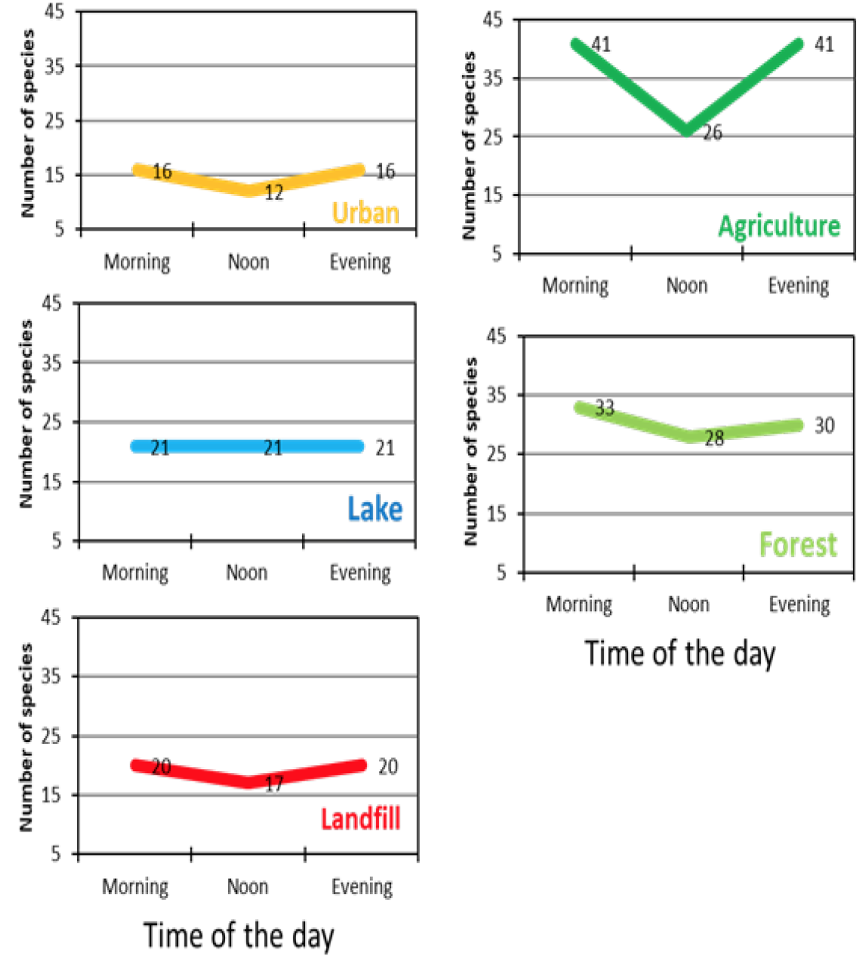Population Explosion and Behavioural Changes of Opportunist Wild Avifauna at a Landfill at Gujranwala in Northeastern Punjab: A Baseline Deviation Study
Population Explosion and Behavioural Changes of Opportunist Wild Avifauna at a Landfill at Gujranwala in Northeastern Punjab: A Baseline Deviation Study
Zunaira Noreen* and Khawar Sultan
Location map showing five selected field sites for avifauna data collection in Gujranwala area. The landfill site is a large depression in the ground and is being filled by solid urban waste. Locations marked ‘X’ shows sites points where field observations of avian species were taken.
Maps showing spatial distribution of selected wildlife avifauna based on field data (birds per 10 min) from the agriculture, landfill, urban, forest and lake sites. Abundance (Figure-g is the total number of birds) and diversity (Figure-h is the number of species) were also determined in this study.
Avian diversity and abundance at five study sites.
Variation in number of active species with time of day (Morning, Noon and Evening) at the five observation sites in the study area.
PCA plot showing the clustering of different avian species at various observation sites.
Graph showing baseline situation of 56 wildlife avifauna species of the Gujranwala area with error bars from the four selected sites (~99% land use) as the number of birds observed per 10 min. The Landfill site histograms show the number of birds in contrast to the local baseline situation.
Comparison of number of birds on the days of week and hierarchy in feeding behavior at the landfill site.
















